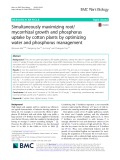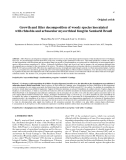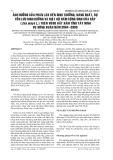
Mycorrhizal growth
-
There are two plant phosphorus (P)-uptake pathways, namely the direct P uptake by roots and the indirect P uptake through arbuscular mycorrhizal fungi (AMF). Maximizing the efficiency of root and AMF processes associated with P acquisition by adjusting soil conditions is important for simultaneously ensuring high yields and the efficient use of available P.
 10p
10p  vishikamaru2711
vishikamaru2711
 29-04-2020
29-04-2020
 18
18
 1
1
 Download
Download
-
Tuyển tập các báo cáo nghiên cứu về lâm nghiệp được đăng trên tạp chí lâm nghiệp Original article đề tài: Effect of soil temperature upon the root growth and mycorrhizal formation of white spruce (Picea glauca (Moench) Voss) seedlings grown in controlled environments...
 4p
4p  toshiba9
toshiba9
 12-10-2011
12-10-2011
 57
57
 4
4
 Download
Download
-
Tuyển tập các báo cáo nghiên cứu về sinh học được đăng trên tạp chí lâm nghiệp đề tài: Growth and litter decomposition of woody species inoculated with rhizobia and arbuscular mycorrhizal fungi in Semiarid Brazil...
 9p
9p  toshiba4
toshiba4
 20-09-2011
20-09-2011
 56
56
 2
2
 Download
Download
-
không có diference đáng kể giữa các cấp phân bón đã được quan sát. Sự hấp thu và còn lại của dinh dưỡng không khác biệt đáng kể giữa các cấp phân bón đó có nitơ và kali cùng cấp. Việc còn lại của...
 6p
6p  phalinh2
phalinh2
 01-07-2011
01-07-2011
 81
81
 3
3
 Download
Download
CHỦ ĐỀ BẠN MUỐN TÌM
















